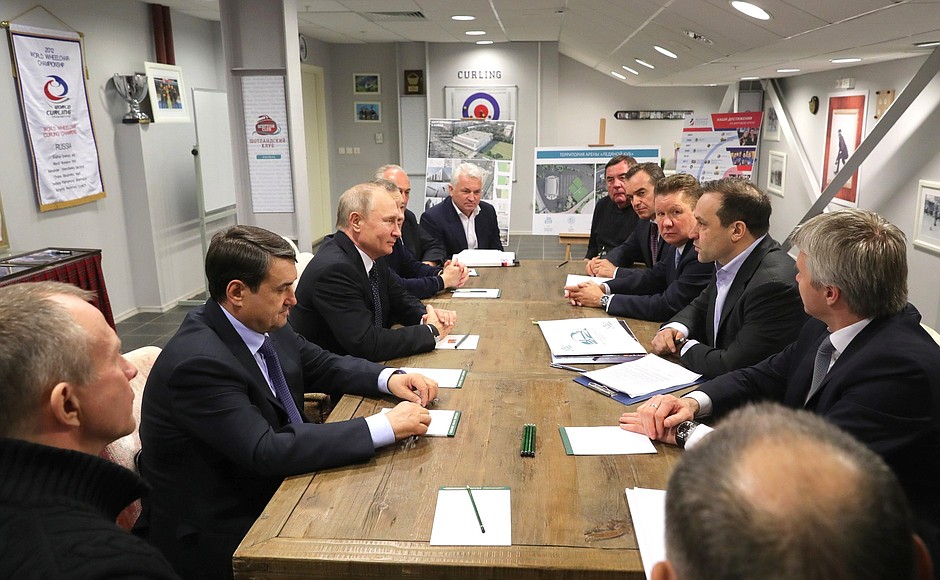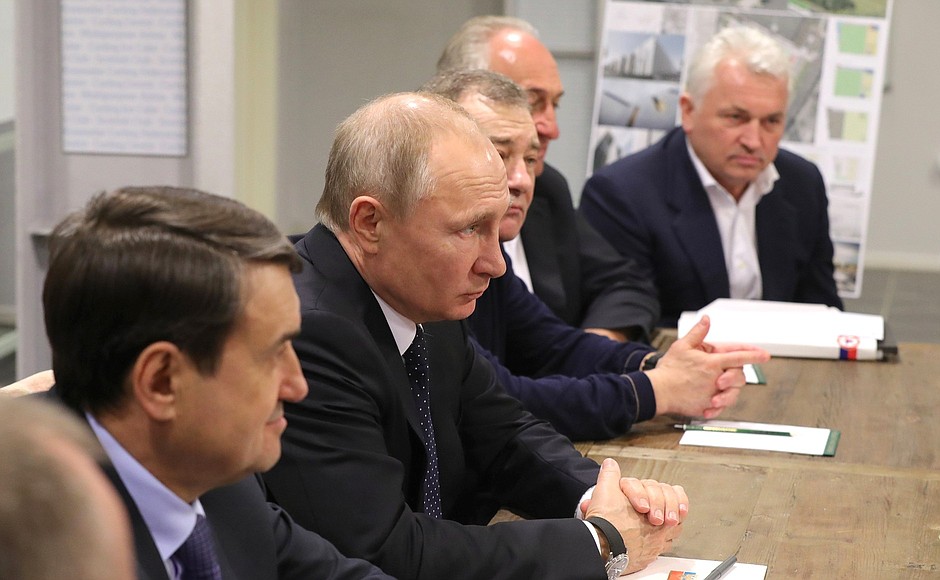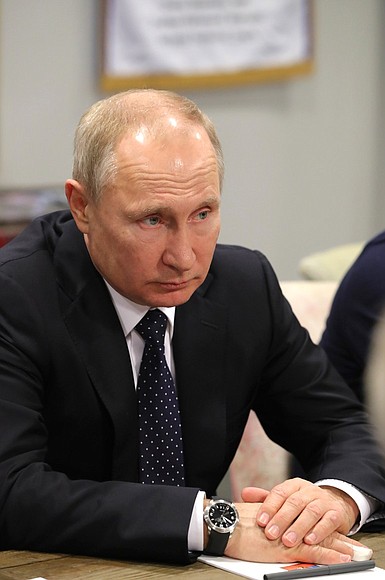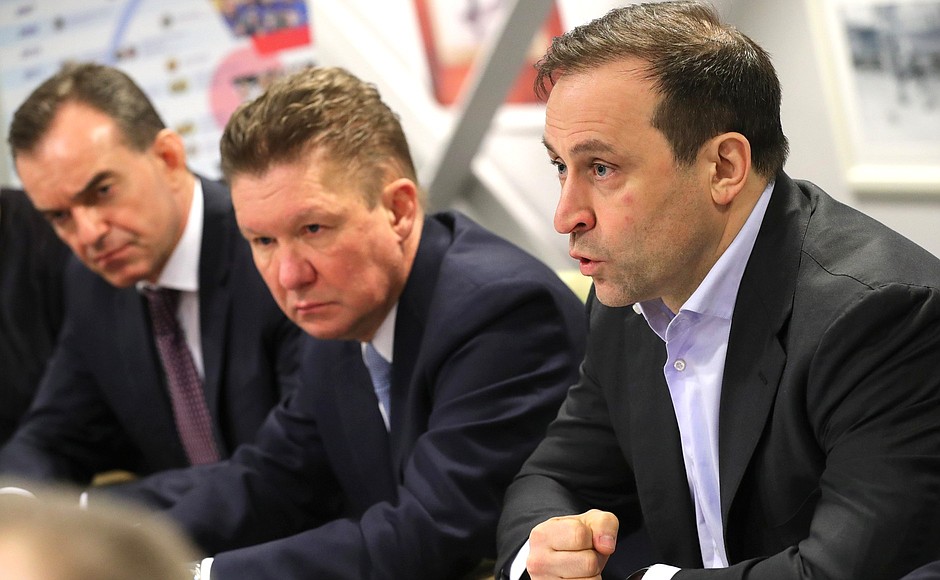The Ice Cube Curling Centre was built between 2010 and 2013 in the coastal cluster of the 2014 Olympic facilities. It is the only sports arena built in Russia especially for curling. The arena has six curling paths and can seat 3,000 spectators.
Apart from the central arena, the Ice Cube also houses a choreography and fitness rooms, locker rooms, restaurants, as well as administrative and medical premises. There are three football fields of different sizes with artificial turf nearby.
The Ice Cube is the main training centre of the Russian men’s and women’s national curling teams. Teams from other Russian cities and CIS countries also come here for training and competitions. Some 100 children are learning to curl in the arena’s special section.
* * *
Beginning of the meeting with President of the Russian Curling Federation Dmitry Svishchev
President of Russia Vladimir Putin: Mr Svishchev, tell us about the operation of this centre, your problems, if any, and whether you need our assistance to settle them.
President of the Russian Curling Federation Dmitry Svishchev: Mr President, thank you for visiting this Olympic facility. It is an honour for us and we appreciate your attention to sports. We unveiled this arena together six years ago, and now we have met here again.
The Olympic curling stadium is the only large world-class international stadium in Russia. But curling is not a popular sport in Sochi. We try to use the stadium for all kinds of events, not only curling competitions but other sports as well, such as martial arts and ice hockey. We also organise cultural events here. However, according to the statistics (and we have been using this stadium for five years), unfortunately, it is difficult to develop a sport like curling in a southern region. Although we do have 100 children from the city and 140 from all over Krasnodar Territory who train here. They have grown to the level of world championships.
However, we have to ask you, Mr President, to support us in the construction of a curling stadium in Moscow and another very important region, the Far East, in Vladivostok. Why? Because China is hosting the next Olympic Games and it would make sense to develop this sport there [in the Far East]. Both the time zone and the climate are favourable. Therefore, these stadiums in Moscow and the Far East will be widely used.
Vladimir Putin: How big is the stadium?
Dmitry Svishchev: The stadium has an area of 11,500 sq m. All the facilities are occupied. Unfortunately, we do not get many spectators. There are 3,000 seats here. But not so many people come to watch curling. Although we are doing the utmost to promote ourselves. We have achieved a lot and have many more fans.
Vladimir Putin: As I understand, curling athletes can train wherever there is ice? No specialised ice facility is necessary?
Dmitry Svishchev: We need to prepare special ice for curling, with special circles. Curling ice is not even and must have frozen water bubbles in it. This requires special preparation and special equipment.
Vladimir Putin: Are the land and the facility under a lease? The stadium was built using a loan from VEB, wasn’t it?
Dmitry Svishchev: The land, around six hectares, was leased under the Olympic programme for 49 years. We used our own funds and a loan from VEB, which is an Olympic investor, to build the stadium. The loan was a big help.
Vladimir Putin: But you still require debt servicing, is that correct?
Dmitry Svishchev: Unfortunately, yes. We need the debt to be restructured and this can be possible with your instruction. We are in the middle of negotiations with VEB. They do want to help and, I have to give them credit, VEB is really being a partner here. However, it is still a bank and payment is our responsibility. Still, we are negotiating.
Vladimir Putin: I see, thank you.
<…>



